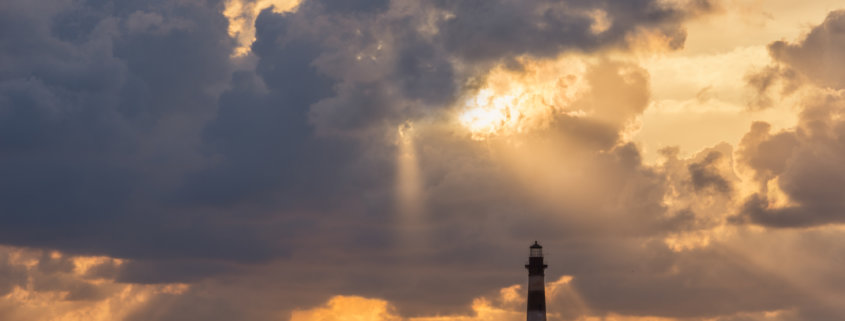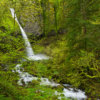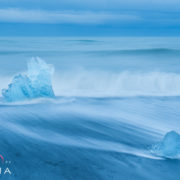How to effectively use lines in Nature Photography Composition
Nature photography composition can be a tough aspect to master. Most of us never really do… but we keep at it. Photography is a journey, after all. What can be considered a great photographic composition can vary from person to person, based on their own way of seeing the world.
However you can greatly increase the effectiveness of your nature photography composition by using compositional elements found in nature. These compositional elements include colors, textures, patterns, textures, lines, lights and more. Personally, I’m a huge fan of using lines in my nature photography composition. Lines in nature are quite easy to find and they can be used to add visual impact to your nature photos.
Finding lines in nature can help simplify a nature photography composition. Using lines your photography composition can help engage the viewer in a very natural way and are pretty easy to find within your landscapes. If you struggle, here are a few tips on how to find them.
Finding Lines for Nature Photography Composition
The horizon line is the most commonly found and easy to incorporate into your images. This line is often placed in the upper or lower third of the image…but there are no rules that dictate it needs to be there. Reflections are a great opportunity to break this common placement of the horizon line.
Rivers, trees, roads and fences can be used within your compositions. Arranging these elements diagonally across your view can help even more to draw the viewer into the image and retain their attention. Some lines are temporary such as where the sand meets the waves at the beach, the movement of the clouds in a long exposure, or a vine climbing up a tree. I try to take advantage of these situations when they present themselves…because they may not be there when you return at a later date.
Rays of light are created from time to time as the clouds pass overhead and the sun peeks through. You may also see these rays with smoke, humidity, or when particles are in the air. Camera exposure to capture the sun rays can be challenging due to the extreme dynamic range of the scene. I advise you to use exposure bracketing to capture photos and then use Photoshop Layers and Masks to blend them together. Sometimes I will use exposure bracketing for the scene when I’m unsure if I’ll need the extra images. But I figure, better to have them and not need them, than need them and not have them. ;)
Let’s not forget about the natural geology formations around us. Places like the southwestern United States, Wave Rock in Australia, the Danxia landforms in China and more, have amazing rock formations with lines throughout. The use of a wide angle lens can help to exaggerate these lines and truly pull the viewer right into your scene.
Creating Line in photography composition
Changing your photography composition by moving around helps to find lines in nature. I take all of my landscape images while using a tripod…but it’s not the first thing I reach for when making decisions on my photography composition. I often tell my students in the field that, when they’re framing a shot, do it with the camera off the tripod. One of the biggest restraints to good photography composition is actually the tripod itself!

Leading lines in nature photography created by using a higher perspective, Redwood Forest National Park, California
We’ve all seen it and we’ve all done it at some point. We walk up to a scene, plop the tripod down, put the camera on it at eye level, and then start to compose a photo. This leaves you stuck. Instead, take the camera off, walk back and forth, move up and down, and the world changes before your eyes. Just take care not to trip over anything! The relationships of foreground and background objects suddenly take form. Moving from left to right can take similar objects that are lined up and create diagonal lines between them. But don’t forget to put the camera back on the tripod once you’ve found your shot so you can get the sharpest possible image.
Using Slow Shutter Speed
Making use of slow shutter speeds will allow objects that are moving to be recorded as streaks, lines, light trails, or intentional blurs. You can create lines in your nature photography composition when you photograph moving water with shutter speeds of 1/2 second or longer, especially at a low angle. A circular polarizer will help achieve longer exposures by reducing the light entering your camera. It also helps reduce reflections off of nearby rocks, moss, leaves, etc…
Star trails can be created by long exposure of several seconds. Taken successively over several hours, these can be combined in post processing to create stunning star trail images that show the passage of time. I’ve had success with images taken with a wide angle lens at f/4 or f/2.8, ISO 400 and 30s to 6 minutes each, depending on how far away from a city you are. You’ll have to capture several photos, back to back, without any significant delay between camera exposures. Using an intervalometer will make this process seamless…unless your battery dies! Keep an eye on that. Also watch out for dew forming on the front element of the lens. Keeping the lens warm with hand warmers in a Lens Muff (or just with a rubber band) will help. The only thing you may have to truly struggle with is boredom. Bring a friend and some coffee.

Line in nature photography composition created by intentional camera movement from Grandfather Mountain, North Carolina
Motion blurs are fun to create and can be a unique way of expressing your vision. When trying to photograph grasses, trees, or flowers and the wind is blowing, an inexperienced photographer may throw in the towel. However, this is just the type of situation that allows you to experiment with creative photography. Use a shutter speed of 1/2 second or longer and simply move the camera upward, downward, side to side, or at a diagonal during the exposure. You can also use the zoom function on your camera lens with a long exposure to create a radial motion effect. I find that I have smoother, more pleasing results if I use my 2 second self timer. I start the camera movement BEFORE the shutter opens, and continue it after the shutter closes. This avoids the choppy look. Intentional camera movement requires a lot of experimentation and many images will be heading straight to the trash folder on my computer. But when you get a winner, you’ll really be able to create impact with the lines created by intentional camera movement. You can practice this anytime with your smartphone. I use an app on my iPhone called Slow Shutter to achieve this effect when my DSLR or mirrorless camera is at home.
Whether the lines your nature photography composition were there when you raised your camera to your eye, or you created them yourself, you can make use of them to enhance your compositions and keep the viewer interested. Spend some time looking at the images of nature photographers you admire and see how often you stop and look at a photo that includes a line or diagonal in it. Probably more than you’ve noticed before.
Have fun finding lines in nature!














